In the heart of Yosemite National Park, a granite giant named Half Dome stands as a testament to nature’s grandeur and power. This iconic landmark is not only a beacon for hikers and adventurers but also a symbol of Yosemite’s timeless beauty. Whether you’re planning your first visit or your twentieth, Half Dome never fails to captivate. In this blog post, we’ll take you on a virtual tour of Half Dome, exploring its history, hiking trails, seasonal variations, and the environmental efforts to preserve its majesty. Strap on your hiking boots and let’s get started
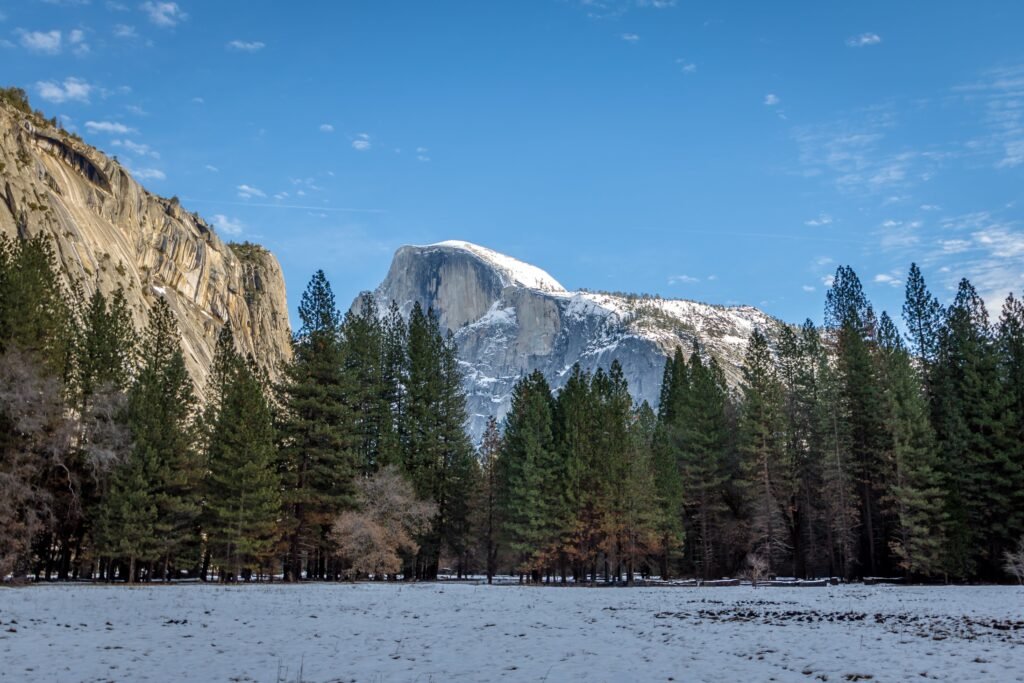
Table of Contents
Introduction to Half Dome in Yosemite National Park
Half Dome is perhaps the most recognizable feature in Yosemite National Park, drawing visitors from around the globe. Its unique shape, resembling a dome sliced in half, is both a geological marvel and a photographer’s dream. Rising nearly 5,000 feet above Yosemite Valley, it offers unparalleled views that leave hikers in awe.
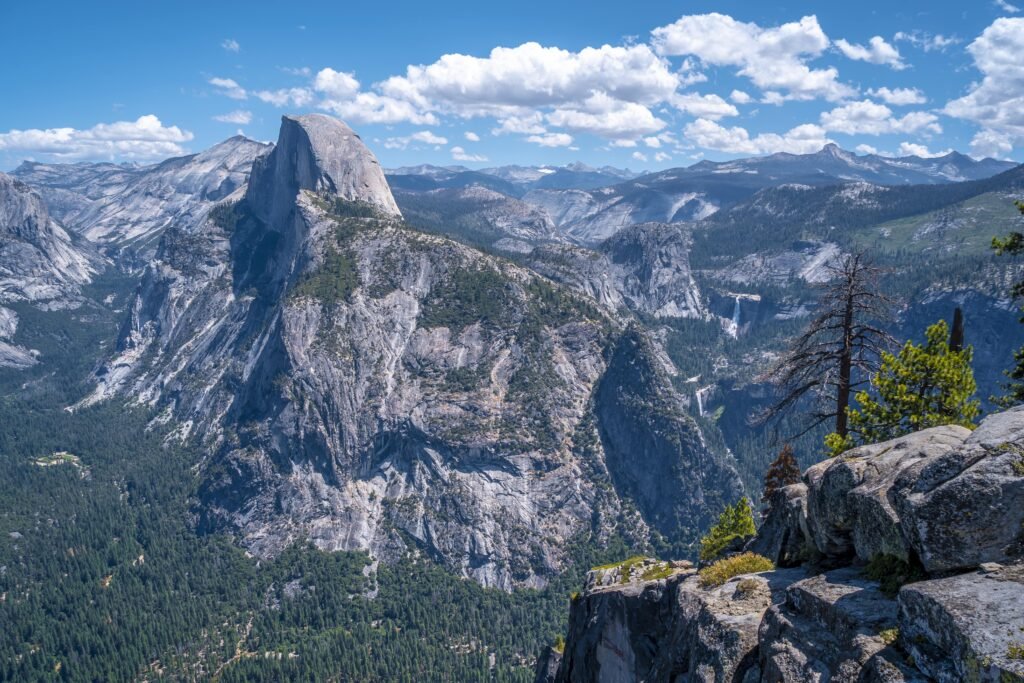
Key Features:
- Elevation: 8,844 feet (2,695 meters)
- Height Above Yosemite Valley: 4,737 feet (1,444 meters)
- Shape: A distinctive, dome-shaped rock formation with a sheer face on one side.
For those who love the outdoors, Half Dome is more than just a destination; it’s a challenging adventure that tests both physical endurance and mental fortitude. Achieving the summit can be a life-changing experience, one that fosters a deep connection with nature and a sense of accomplishment. Let’s explore what makes Half Dome such a sought-after goal for hikers and nature enthusiasts alike.
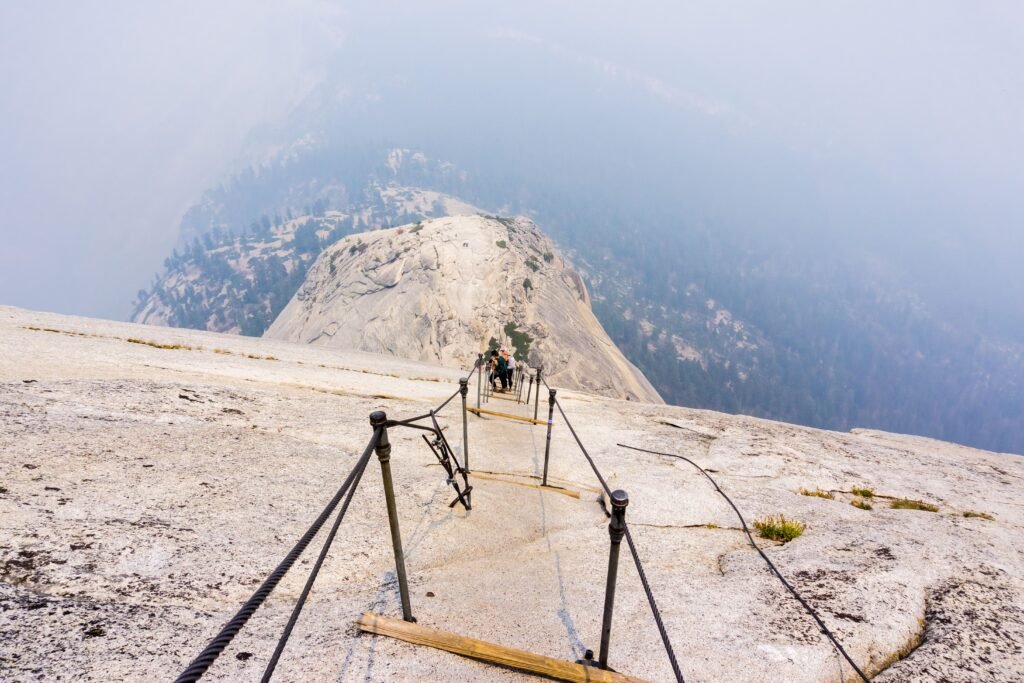
Whether you’re a seasoned hiker or just beginning your outdoor adventures, Half Dome presents an irresistible challenge. In the sections that follow, we’ll equip you with the knowledge to plan your own unforgettable hike, with insights into the history, trails, safety, and the best times to visit.
Historical Significance and Geographical Features
Half Dome isn’t just a natural wonder; it’s steeped in history and cultural significance. Native American tribes, including the Ahwahneechee (Indigenous people of California who historically lived in the Yosemite Valley) have long regarded the area as sacred. The dome itself was formed millions of years ago during the Cretaceous period, shaped by glacial activity that left its iconic sheer face and rounded back.
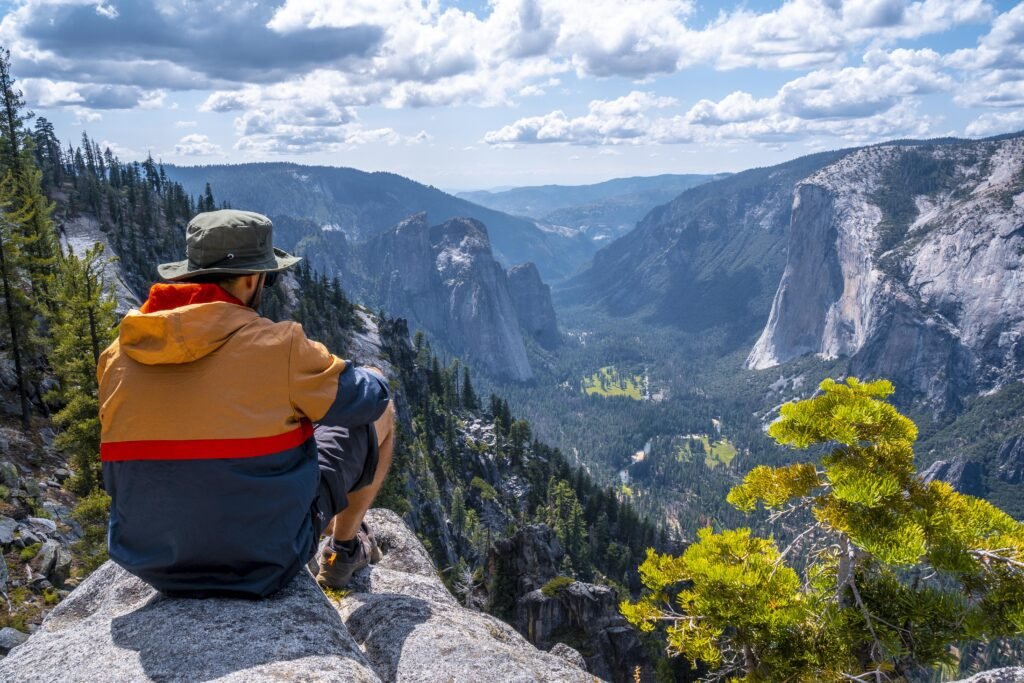
The geographical features of Half Dome are just as fascinating. The granite monolith rises to an elevation of 8,839 feet, a testament to the dynamic geological forces that shaped the Sierra Nevada. Its sheer north face, towering over Yosemite Valley, offers a dramatic contrast to the lush meadows and forests below.
Understanding Half Dome’s history and geological attributes enhances the appreciation of this majestic peak. Knowing that you’re walking in the footsteps of ancient glaciers and indigenous cultures adds layers of meaning to the experience, making each step up its trails a walk through time.
Hiking Half Dome: Preparation, Permits, and Trail Guide
Preparing for a hike up Half Dome requires more than just physical fitness; it demands careful planning and respect for the natural environment. Before setting foot on the trail, hikers must secure a permit. Due to high demand and environmental concerns, permits are issued through a lottery system, ensuring that the natural beauty of the area is preserved for future generations.
Permits Required: A permit is required to hike Half Dome during the cable season (late May to October).
Lottery System: Permits are issued through a lottery system. You can apply for a permit online or at the Yosemite Valley Visitor Center.
- Daily Limit: There is a daily limit on the number of permits issued, so it’s recommended to apply in advance.
Hiking Half Dome:
- Difficulty: Strenuous
- Distance: 14-17 miles (22-27 kilometers) round-trip
- Elevation Gain: 4,800 feet (1,463 meters)
- Time: 12-16 hours
- Permit Required: A permit is required to hike Half Dome during the cable season (late May to October)
Half Dome Trail Condition:
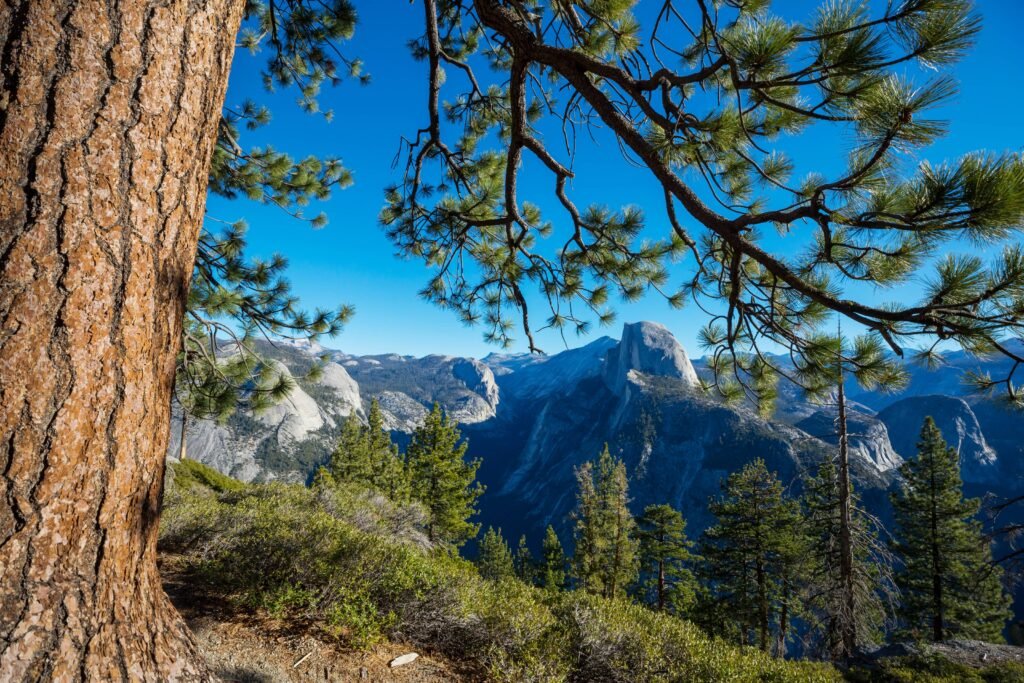
- Weather: Yosemite National Park can experience sudden weather changes, including rain, snow, and strong winds. Check the weather forecast before your hike and be prepared to adjust your plans if necessary.
- Trail Closures: The trail to Half Dome may be closed due to weather conditions, maintenance, or safety concerns. Check the park website or visitor center for the latest updates.
- Crowds: Half Dome is a popular hike, especially during peak season. Be prepared for crowds and consider hiking early in the morning or late in the afternoon to avoid the busiest times.
The Different Routes: JMT vs. Mist Trail vs. Cables Route
Hikers have several routes to choose from when tackling Half Dome, each with its own unique challenges and rewards.
The John Muir Trail (JMT) offers a longer, more gradual ascent, ideal for those who prefer a steady pace and breathtaking vistas along the way.
Alternatively, the Mist Trail is shorter and steeper, leading hikers past the roaring Vernal and Nevada Falls. This route is popular for its dynamic scenery and exhilarating pace, though it demands more physical exertion.
Finally, the Cables Route is a thrilling finale to any Half Dome hike. Installed in 1919, the cables allow hikers to ascend the steepest section of the dome. Proper equipment, including gloves, is recommended for this portion, which tests even the bravest of adventurers with its adrenaline-pumping climb.
Things to do in Yosemite National Park:
In addition to hiking Half Dome, there are many other activities to enjoy in Yosemite National Park:
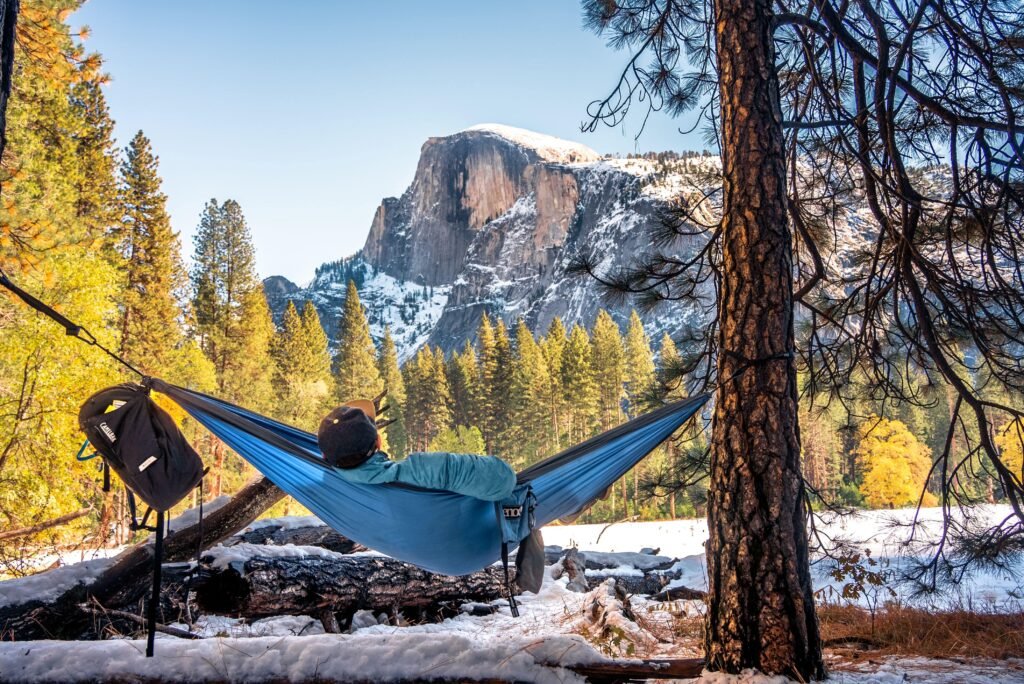
- Scenic Drives: Explore the park’s stunning landscapes on scenic drives such as Tioga Road and Glacier Point Road.
- Waterfalls: Visit iconic waterfalls like Yosemite Falls, Bridalveil Fall, and Vernal Fall.
- Wildlife Viewing: Spot black bears, deer, and other wildlife in the park.
- Camping: Enjoy camping in one of the park’s many campgrounds.
- Rock Climbing: Challenge yourself with rock climbing in Yosemite Valley.
- Biking: Explore the park on a bike ride.
Other Attractions in Yosemite National Park
In addition to the iconic Half Dome, Yosemite National Park offers a variety of other attractions:
Scenic Drives:
- Tioga Road: A scenic drive that passes through alpine meadows, lakes, and glaciers.
- Glacier Point Road: A scenic drive that leads to Glacier Point, offering panoramic views of Yosemite Valley.
Waterfalls:

- Yosemite Falls: One of the tallest waterfalls in North America, consisting of three sections.
- Bridalveil Fall: A beautiful waterfall that cascades down a granite cliff.
- Vernal Fall: A popular waterfall with a mist trail that takes you behind the falls.
Wildlife Viewing:
- Black Bears: These iconic animals can be seen in the park, especially in the spring and summer.
- Deer: Mule deer and black-tailed deer are common sights in Yosemite.
- Other Wildlife: Keep an eye out for other animals such as squirrels, chipmunks, and birds.
Rock Climbing:
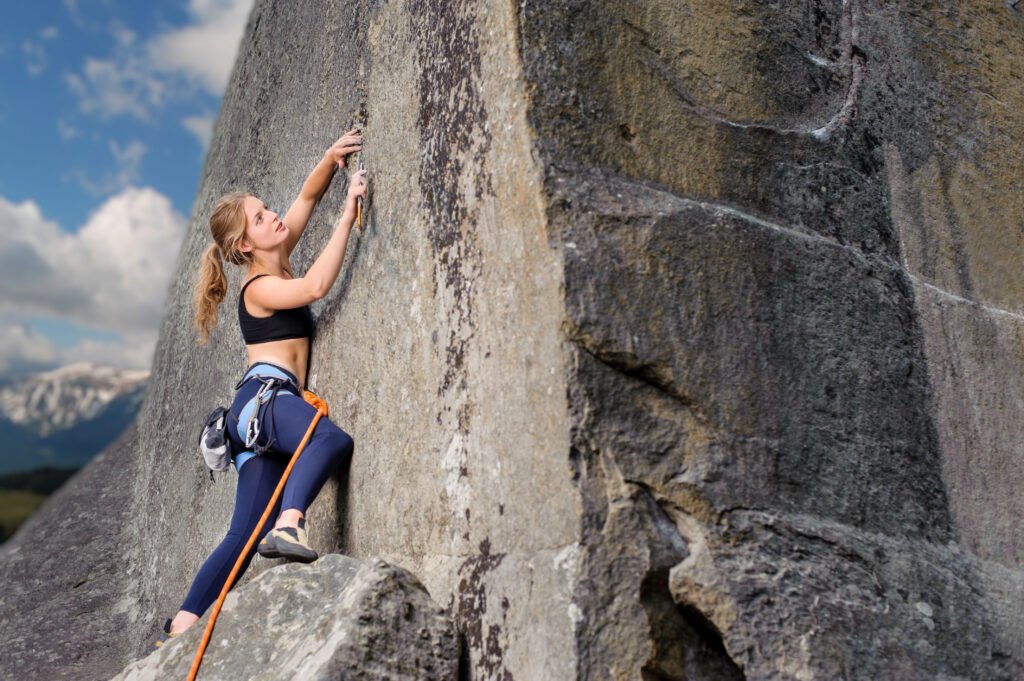
- Yosemite Valley: A world-renowned destination for rock climbing, with challenging routes for all levels.
Camping:

- Yosemite Valley Campground: The main campground in the park, offering tent and RV sites.
- Tuolumne Meadows Campground: A high-elevation campground with stunning views of the surrounding mountains.
Environmental Impact and Preservation Efforts
The popularity of Half Dome presents challenges for the preservation of its natural beauty. High foot traffic can lead to erosion and environmental degradation if not managed carefully. Yosemite National Park has implemented measures to mitigate these effects, including the permit system and maintaining designated trails.
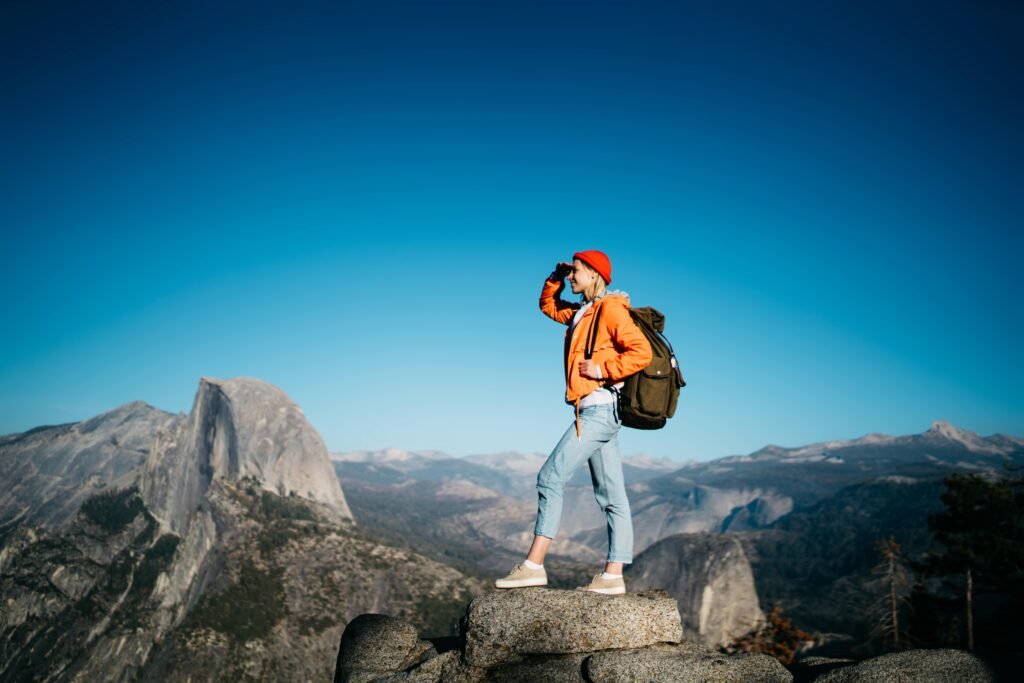
Visitors are encouraged to adhere to Leave No Trace principles, minimizing their impact on the landscape. Participation in conservation efforts, such as trail maintenance or educational programs, helps protect this iconic site for future generations.
Appreciating Half Dome’s beauty comes with a responsibility to preserve it. By practicing sustainable tourism and supporting preservation initiatives, hikers can ensure that this natural wonder remains unspoiled for all to enjoy.
Conclusion: The Timeless Allure of Half Dome
Half Dome’s allure lies in its ability to awe and inspire, offering a connection to nature’s grandeur that transcends time. Whether you’re drawn by the challenge of the hike, the stunning vistas, or the rich history, Half Dome promises an experience that stays with you long after you’ve returned home.
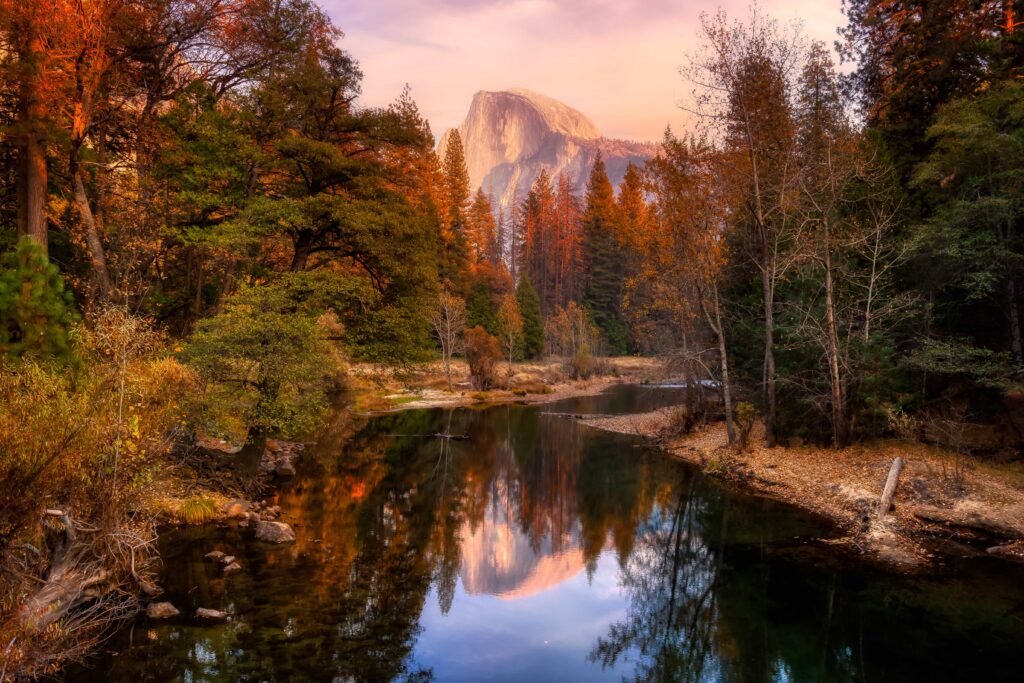
For hikers, nature enthusiasts, and travel bloggers, Half Dome is more than a destination; it’s a source of inspiration and discovery. Its timeless beauty beckons those seeking adventure and serenity, inviting them to explore and preserve this remarkable landmark.
FAQ: (Frequently Asked Questions)
How far is Yosemite from San Francisco?
3 hrs. 29 min (169.6 mi) via I-580 E and CA-120 E
How many days do you need in Yosemite?
Plan on spending two to four days in Yosemite if you want enough time to see all the amazing sights. This will give you plenty of time to see Half Dome, Yosemite Falls, Glacier Point, and enjoy some hiking trails.
Can you get into Yosemite without a reservation?
If you enter Yosemite before 5 am or after 4 pm, you do not need a reservation. You can remain in the park during peak hours if you arrive during these non-peak hours (however, staying overnight requires a reservation).
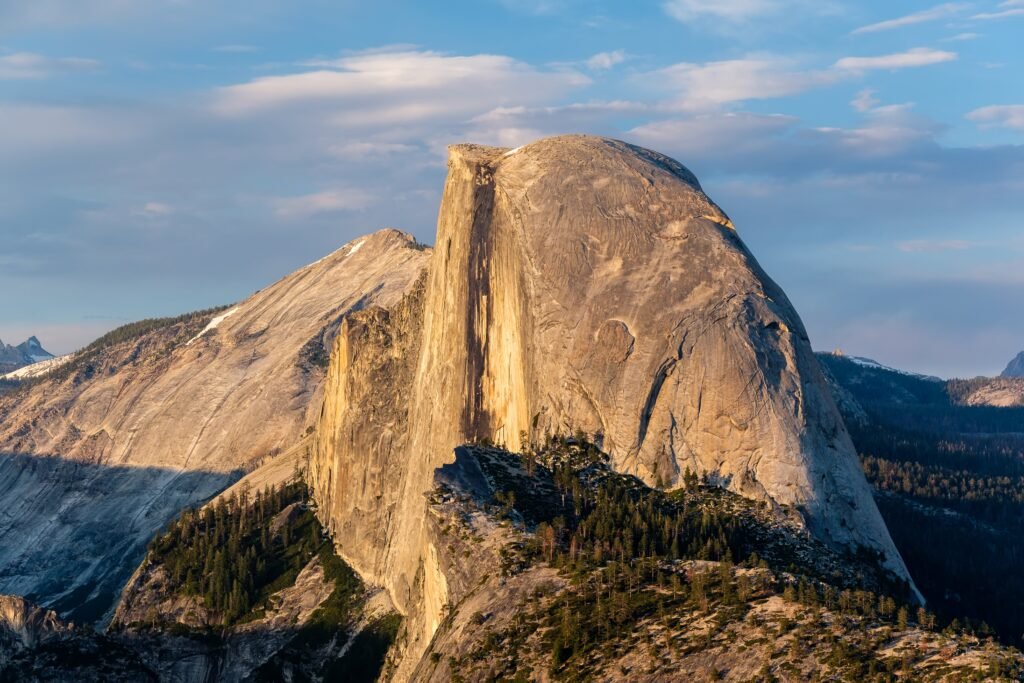
Pingback: The Ultimate Bucket List: 9 Best Hiking Trails in USA to Conquer - Blogs by MHS